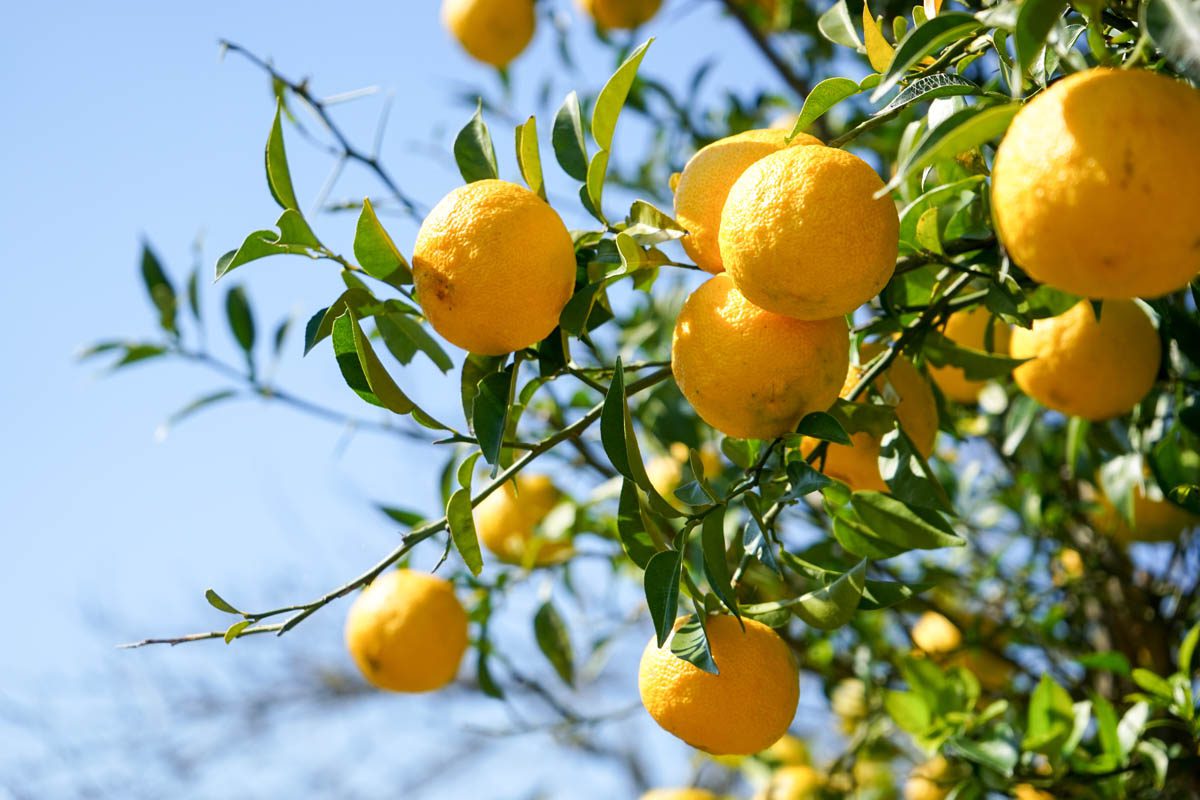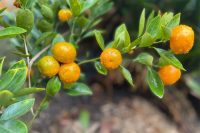What is yuzu?
Yuzu (Citrus junos Sieb. ex Tanaka) is a citrus that is believed to have originated from the Hubei Province, along the Yangtze River in China. It is believed to be a natural hybrid of the Ichang papeda (Citrus cavaleriei), a small wild species of lemon, and the mandarin (Citrus reticulata). This fruit was introduced to Japan over 1,000 years ago during the Tang dynasty.
Yuzu is an essential ingredient in Japanese cuisine, particularly in the Kōchi Prefecture, where it is widely cultivated. The fruit’s unique aroma and tart flavour make it a versatile ingredient that is used in everything from marinades and dressings to desserts and beverages. Yuzu is also used in traditional Japanese medicine for its health benefits, which include reducing inflammation and relieving symptoms of colds and flu.
In recent years, yuzu has gained popularity around the world for its distinct flavour and fragrance. It has become a sought-after ingredient in high-end restaurants and cocktail bars. As a result, yuzu has become an important part of global culinary culture and is now cultivated in various regions outside of Japan.
Other names:
Japanese: Yuzu – 柚子
Korean: Yuja – 유자
Chinese: Xiāngchéng – 香橙
Yuzu’s origins can be traced back to the upper regions of the Yangtze River in China, where it was discovered growing wild by agricultural explorer Frank Meyer. In 1914, seeds from the fruit were brought back to the United States by Meyer, who originally named the fruit Kanzu orange. Meyer described the yuzu as follows:
- The fruits were loose-skinned, round flattened, the size of mandarin oranges, the colour of rind light yellow; rind full of oil glands, smelling like a fine lemon; segments separating easily; fairly juicy and of an agreeable sharp sour taste; contains plenty of large seeds.
This discovery marked the beginning of yuzu’s journey from its native region to other parts of the world.
Related: Sudachi citrus
Cultivation
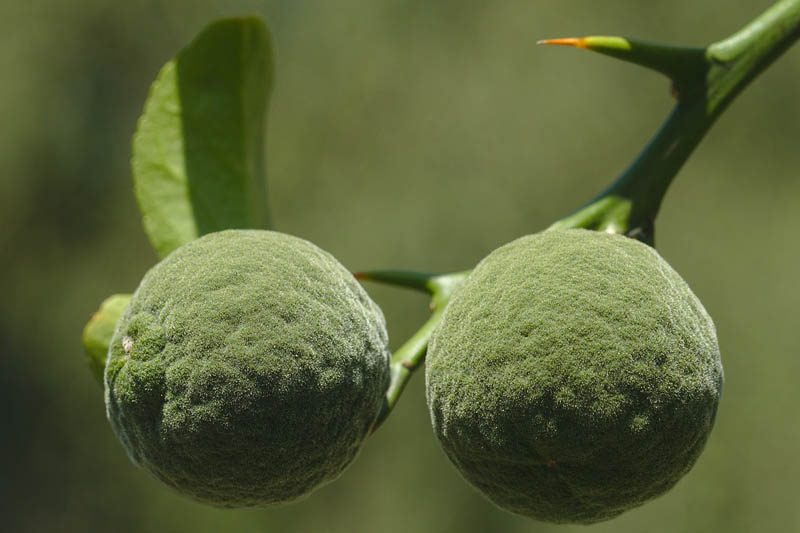
The epicentre of yuzu cultivation is Kōchi Prefecture, on Shikoku Island, Japan which once enjoyed a booming Yanase cedar logging industry. Wood was transported along the Yanase Forest Railway that connected the towns of Nahari, Tano, Yasuda, Kitagawa and Umaji. By the 1960s, the logging industry fell into decline as cheaper wood became available. The Yanase Forest Railway closed in 1964. Locals who had grown yuzu in household gardens for centuries, switched their focus to yuzu, planting citrus groves alongside the old railway line, renaming it Yuzu Road. In 2017, Yuzu Road was declared a heritage site by the Japanese Agency for Cultural Affairs.
The region now produces 800 tonnes of yuzu each year, which accounts for half of the national harvest. Umaji is a small village of 800 people and the epicentre of the yuzu farming industry. Signature dishes in Umaji include inaka-sushi, a sushi dish containing preserved vegetables or sweet fried tofu, flavoured with yuzu vinegar. Yuzu ponzu, a yuzu citrus dipping dish, and Gokkun Umajimura, the official yuzu citrus drink of Umaji.

In autumn, the Yuzu Hajimaru Festival is held in Umaji which marks the start of the yuzu harvest season.
Related: Australian finger lime Buddha’s hand citrus
What does yuzu smell and taste like?
Yuzu peel has a highly aromatic and refreshing zesty citrus scent with a sweet accent. The taste is described as a combination of lemon, and grapefruit, with mandarin notes, floral undertones and a sharp, acidic aftertaste. Yuzu leaves have a citrus aroma with a hint of pine.
What is the difference between yuzu and lemon?
Yuzu is a separate citrus species from lemon, although the flavour is somewhat similar. Lemons and yuzu are both hybrids but originated from different species of plants.
| Yuzu | Lemon |
| Ichang papeda (Citrus cavaleriei) x bitter mandarin |
Citron (Citrus medica) x bitter orange |
Why is yuzu so popular?
The versatility of yuzu makes it one of the most popular citrus fruits in East Asia, with a wide variety of culinary and therapeutic uses.
Description
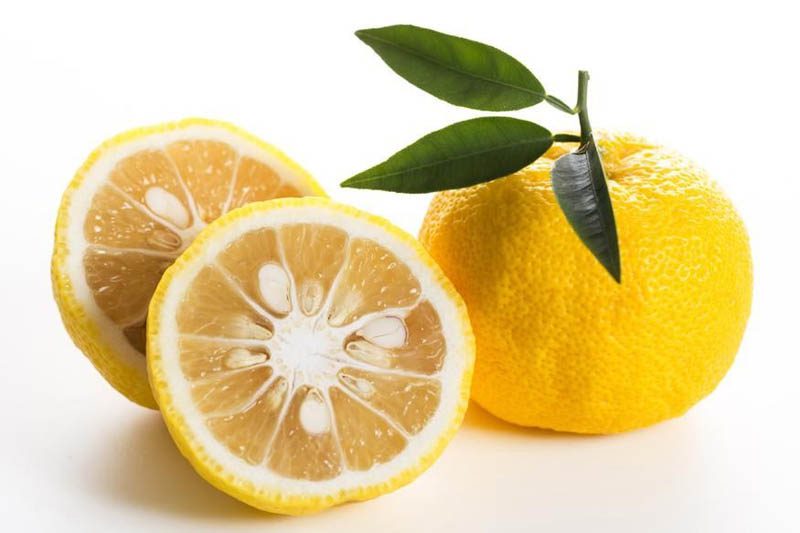
Yuzu is an evergreen tree that reaches a mature height of 3.5 metres, with a spread of 2 – 3 metres. The fruit is smaller than other citrus, around the size of a golf ball. Immature fruit is green but once mature, the fruit is yellow, thick with a lumpy rind. The juice is much more sour and acidic than other citrus fruits.
Yuzu produces highly-scented white flowers from April to May, followed by small, green fruit from June to August. Most citrus trees produce far more fruit buds than the tree can support and will drop the majority. In November and December, the fruit matures and turns a beautiful yellow/orange colour. The Japanese eat yuzu fruit when it is green and when it is yellow/orange.
Culinary uses
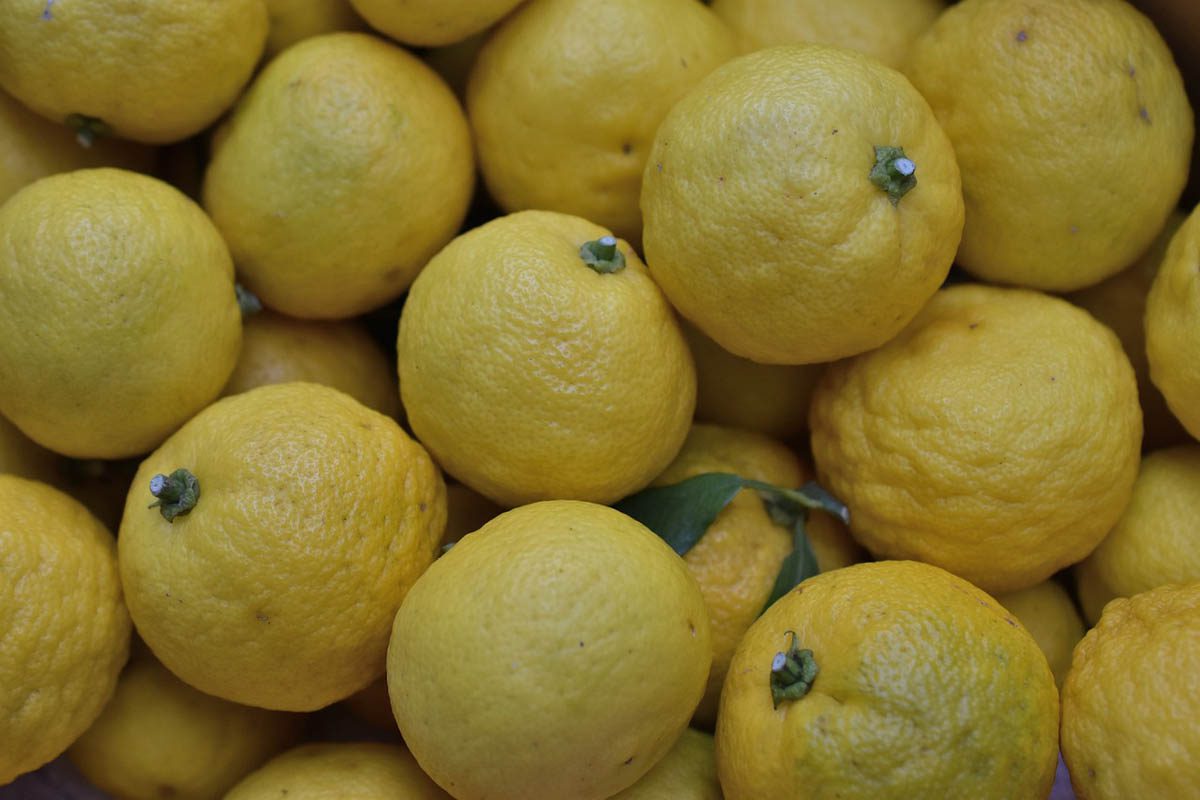
Yuzu is an aromatic fruit with a sour, tart taste, it can be eaten raw or cooked. The peel, juice (called yuzusu or yunosu ) and seeds are all used in Japanese and East Asian cuisine to add flavour to several drinks including:
Traditional uses:
- Yuzuri and yuzushu liqueurs
- Flavoured gin or vodka
- Yuzucello (Italian liqueur replacing lemon with yuzu)
- Yuzu-cha (Japanese tea)
- Yuzu koshō (Japanese condiment)
- Yuja-cheong (Korean marmalade)
- Yuja-cha (Korean yuzu tea is made by mixing yuja-cheong with hot water
- Yuja-hwachae (Korean punch made with shredded yuzu)
Other uses:
- Tarts
- Candy
- Sorbet
- Marinades
- Cakes
- Marmalade
- Custard
- Jelly
- Pickled
- The highly aromatic zest adds flavour to vegetables and fish
- The dried rind can be ground and used as a spice
Yuzu can elevate any dish or beverage that calls for a touch of lemon. The fragrant leaves of the yuzu tree can be employed to add depth to various savoury preparations such as curries, stews, and soups.
Apart from its culinary applications, yuzu can also be used as a fragrant room spray. The essential oils extracted from the fruit are commonly used in aromatherapy and cosmetics for their antiseptic properties that are beneficial for treating oily skin and acne.
Yuzu citrus recipes
1. Yuzu ponzu sauce
Ingredients:
- 1/4 cup soy sauce
- 1/4 cup yuzu juice
- 2 tbsp mirin
- 2 tbsp rice vinegar
- 1 tbsp bonito flakes (optional)
Method:
- Combine soy sauce, yuzu juice, mirin, and rice vinegar in a small saucepan.
- If using bonito flakes, add them to the saucepan.
- Heat the mixture over low heat until it reaches a gentle simmer.
- Remove from heat, let it cool, then strain to remove bonito flakes if used.
- Store in the refrigerator and use as a dipping sauce for sushi, and sashimi, or as a dressing for salads.
2. Yuzu koshō
Yuzu koshō is a Japanese condiment typically served with
Ingredients:
- 1/4 cup yuzu zest
- 1/4 cup green chilli peppers (e.g., jalapeno, serrano)
- 1/4 cup kosher salt
Method:
- Finely mince the yuzu zest and chilli peppers.
- Combine the minced zest and peppers with salt in a jar.
- Press down firmly to release the juices.
- Cover and let it ferment at room temperature for 1 week, then store in the refrigerator.
- Use it as a condiment to add a spicy and tangy kick to your dishes.
3. Yuzu marmalade
Ingredients:
- 4 yuzu fruits
- 1 1/2 cups sugar
- 1 cup water
Method:
- Wash the yuzu fruits and remove the zest with a peeler or grater.
- Cut the yuzu in half and remove the seeds, then finely chop the fruit and zest.
- Combine chopped yuzu, zest, sugar, and water in a saucepan.
- Cook over medium heat, stirring occasionally, until the mixture thickens (about 20-30 minutes).
- Transfer the marmalade to a sterilised jar and let it cool before sealing and storing.
- Enjoy on toast, yogurt, or as a glaze for roasted meats.
4. Yuzu tea
Ingredients:
- 1 yuzu fruit
- 1 tbsp honey
- Hot water
Method:
- Cut the yuzu fruit in half and remove the seeds.
- Squeeze the juice from the fruit into a cup.
- Add honey and mix well.
- Pour hot water over the mixture and stir to combine.
- Drink while still hot.
5. Yuzu salad dressing
Ingredients:
- 1/4 cup yuzu juice
- 1/4 cup olive oil
- 2 tbsp rice vinegar
- 1 tbsp soy sauce
- 1 tbsp honey
- Salt and pepper to taste
Method:
- In a small bowl, whisk together yuzu juice, olive oil, rice vinegar, soy sauce, and honey.
- Season with salt and pepper to taste.
- Drizzle over your favourite salad and toss to combine.
6. Yuzu sake cocktail
Ingredients:
- 60 ml sake
- 30 ml yuzu juice
- 30 ml simple syrup
- Ice
Method:
- Fill a cocktail shaker with ice.
- Add sake, yuzu juice, and simple syrup.
- Shake well and strain into a chilled glass.
- Garnish with a slice of yuzu or a twist of yuzu zest.
7. Yuzu steamed fish
Ingredients:
- 500 g white fish fillets (e.g., cod, halibut, barramundi or sea bass)
- 1/4 cup yuzu juice (fresh or bottled)
- 2 tbsp soy sauce
- 2 tbsp mirin (sweet Japanese rice wine)
- 1 tbsp sake (Japanese rice wine)
- 1 small yuzu or lemon, thinly sliced (optional)
- 1/2 cup julienned vegetables (e.g., carrot, bell pepper, zucchini)
- Salt and pepper, to taste
- Fresh cilantro or parsley for garnish (optional)
Method:
- Combine yuzu juice, soy sauce, mirin, and sake to create a marinade in a shallow dish and mix well.
- Season the fish fillets with salt and pepper on both sides. Place the fillets in the marinade, ensuring they are well coated. Cover and refrigerate for at least 15-20 minutes, turning the fillets once halfway through the marinating process.
- Prepare a steamer by filling the bottom part with water and bringing it to a boil. If using a bamboo steamer, line the bottom with parchment paper or cabbage leaves to prevent the fish from sticking.
- Remove the fish fillets from the marinade and place them in the steamer basket, leaving some space between each fillet. Reserve the marinade for later use.
- Scatter the julienned vegetables and yuzu or lemon slices (if using) over the fish fillets.
- Cover the steamer and steam the fish for 8-10 minutes or until the fish is cooked through and flakes easily with a fork. The cooking time may vary depending on the thickness of the fish fillets.
- While the fish is steaming, pour the reserved marinade into a small saucepan and bring it to a boil. Reduce the heat and let it simmer for a few minutes until slightly thickened.
- Carefully remove the fish fillets and vegetables from the steamer and transfer them to a serving plate. Drizzle the fish with the reduced marinade and garnish with fresh cilantro or parsley, if desired. Serve immediately with steamed rice or your preferred side dish.
8. Yuzu vinaigrette
Ingredients:
- 1/4 cup yuzu juice
- 1/2 cup olive oil
- 2 tbsp rice vinegar
- 1 tbsp honey
- Salt and pepper, to taste
Method:
- Whisk together yuzu juice, olive oil, rice vinegar, and honey in a small bowl.
- Season with salt and pepper to taste.
- Use as a dressing for salads or a marinade for fish and seafood.
9. Yuzu miso soup
A traditional Japanese soup.
Ingredients:
- 4 cups dashi (Japanese soup stock)
- 1/4 cup white miso paste
- 1/2 cup diced tofu
- 1/4 cup chopped green onions
- 2 tbsp yuzu juice
Instructions:
- Heat dashi in a saucepan over medium heat.
- Dissolve the miso paste in a small amount of dashi, then stir the miso mixture into the saucepan.
- Add tofu and cook until heated through.
- Remove from heat, add yuzu juice, and garnish with green onions.
10. Yuzu glazed chicken
Ingredients:
- 4 boneless, skinless chicken breasts
- 1/4 cup yuzu juice
- 1/4 cup soy sauce
- 1/4 cup honey
- 2 cloves garlic, minced
- 1 tbsp grated ginger
Instructions:
- Combine yuzu juice, soy sauce, honey, garlic, and ginger in a bowl.
- Marinate chicken breasts in the mixture for at least 30 minutes.
- Preheat oven to 375°F (190°C).
- Place marinated chicken on a baking sheet and bake for 20-25 minutes, basting occasionally with the marinade, until cooked through.
Health benefits
Yuzu is rich in vitamin C and antioxidants (nomilin, limonene, vitamin C) and contains anti-clotting properties (hesperidin and naringin). In Japan, yuzuyu (柚子湯) is a bathing tradition in celebrated during the winter solstice in which whole fruits are added to the bath water and are said to ward off colds and flu, treat arthritis, rough skin and rheumatism and bring wealth and good health.
Additional health benefits include:
- Seventeen women with premenstrual symptoms inhaled yuzu essential oil, which resulted in a significant decrease in emotional symptoms along with decreased heart rate, increased high-frequency power of heart rate variability and decreased tension-anxiety, anger-hostility, and fatigue-common.
- Limonoids from yuzu seeds may protect against lung, breast, colon and prostate cancers.
- Water extract from yuzu was found to inhibit influenza virus A/Taiwan/1/86(H1N1).
- A 2006 study found p -methoxycinnamic acid extracted from yuzu seeds had antimicrobial properties against Micrococcus luteus, Staphylococcus aureus, Escherichia coli and Salmonella enteritidis.
- One study found an extract from yuzu peel had an anti-diabetic effect on test mice and significantly reduced weight gain and a rise in liver fat content.
Where can I buy yuzu?
The yuzu is now one of the most widely cultivated citrus fruits in Japan but until recently was not well known outside East Asia. However, yuzu has recently attracted the attention of chefs around the world. Specialist nurseries and greengrocers may be able to supply yuzu trees or fruit. For Australian readers, Daleys Fruit stock grafted yuzu trees.
The importation of yuzu fruit and trees is banned by the United States Department of Agriculture due to the risks associated with importing common diseases prevalent in Asian citrus that could impact citrus growers in the United States. Yuzu is however grown in the United States from trees introduced by Japanese settlers in the 1800s.
How to grow yuzu
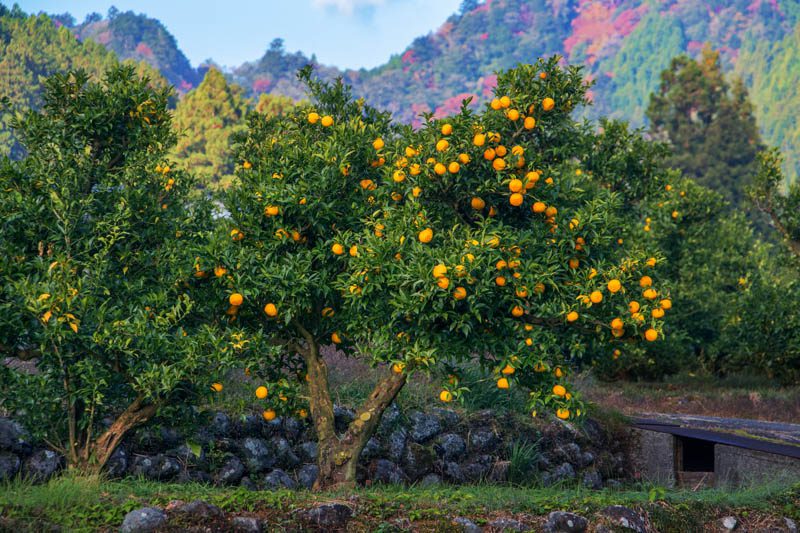
Yuzu are slow-growing trees that can take five to ten years before they produce fruit from a seedling. Grafted trees will generally fruit by the second year. However, it is recommended the flowers be removed from immature trees to allow them to direct their energy into growth instead of fruit production. The stems contain 2.5 cm sharp thorns, which can make harvesting more of a challenge.
Plants can be grown in containers or the ground. However, plants grown in containers will produce less fruit than those in the ground. But, containers are good for people short on space or those in rental properties.
Yuzu is more cold-tolerant than other citrus varieties and can survive down to -6°C. Its preferred location is full sun, with free-draining soil. Fertilise with a good quality citrus fertiliser four times a year. All citrus species have shallow feeder roots, therefore underplanting is not recommended as they do not like to compete with other plants for nutrients. Feed a good-quality citrus fertiliser 3 – 4 times a year and mulch well.
Planting
- The best time of year to plant your citrus tree is in spring when the soil temperature is warming up. Never plant young trees in cold soil.
- Put the tree in its container into a bucket and fill it with water. Allow it to soak for 10 minutes. Remove the pot from the container taking care not to damage the roots. Leave the tree in the water until it is ready to plant.
- If planting in the ground, mix in plenty of organic fertiliser, dig a hole twice the width of the tree, and add 1 kg of superphosphate and 0.5 kg of organic fertiliser. Work thoroughly into the soil.
- Place the tree in the centre of the hole and carefully spread the roots out and down. Backfill the hole with soil. Do not plant your citrus too deep as they are surface feeders. Add a 5-10 cm layer of mulch, to conserve moisture, moderate soil surface temperature and deter weeds. Leave a ring around the trunk of the tree mulch-free to prevent collar rot.
- Citrus roots are concentrated in the top 30-50 cm of soil and do not like plants around the base of the tree. Weed regularly and resist the temptation to plant companion plants around the base.
| Light | At least six hours of full sunlight a day |
| Water | Give a deep water at least once a week, or more often in hot weather and less in winter. Yuzu prefers a uniform level of moisture around the root zone. It is important to ensure the tree has constant moist soil (but not saturated) during flower bud formation through to the final fruit set to ensure a good crop. Feel the leaves on hot days, if they feel cool, the tree has enough water, if they feel dry or leathery, they need more water. |
| Soil | Use well-draining, organically rich soil. Soil pH should be between 6.0 and 7.0. Look for a citrus-specific potting mix or a premium potting mix if growing in pots. |
| Temperature | Yuzu prefers temperatures between 15-29°C (60-85°F) during the growing season. It can tolerate colder weather in winter, down to -6°C (20°F), though prolonged exposure to such low temperatures can be harmful. Young trees should be protected from frost as they are more susceptible to damage. |
| Fertiliser | Feed with a slow-release fertiliser in spring, as well as a water-soluble citrus fertiliser every month during the growing season (spring to early autumn). Do not fertilise in autumn or winter. |
| Humidity | Moderate, between 40-50%. |
| Pruning | Prune to maintain shape and size after the fruiting season. Remove dead or diseased branches as needed. |
| Repotting | Repot every 2-3 years or when the tree becomes root-bound. Spring is the best time for repotting. |
| Pest control | Watch for common pests like aphids, scale, and spider mites. Use a horticultural oil or soap to control these pests. |
| Pollination | Self-pollinating and does not need another citrus tree for self-pollination. |
| Harvest | Harvest in mid to late winter when the fruit is bright orange. |
Julia is a writer and landscape consultant from Wollongong with a love of horticulture. She had been an avid gardener for over 30 years, collects rare variegated plants and is a home orchardist. Julia is passionate about learning and sharing her knowledge of plant propagation and plant toxicology. Whether it’s giving advice on landscape projects or sharing tips on growing, Julia enjoys helping people make their gardens flourish.
